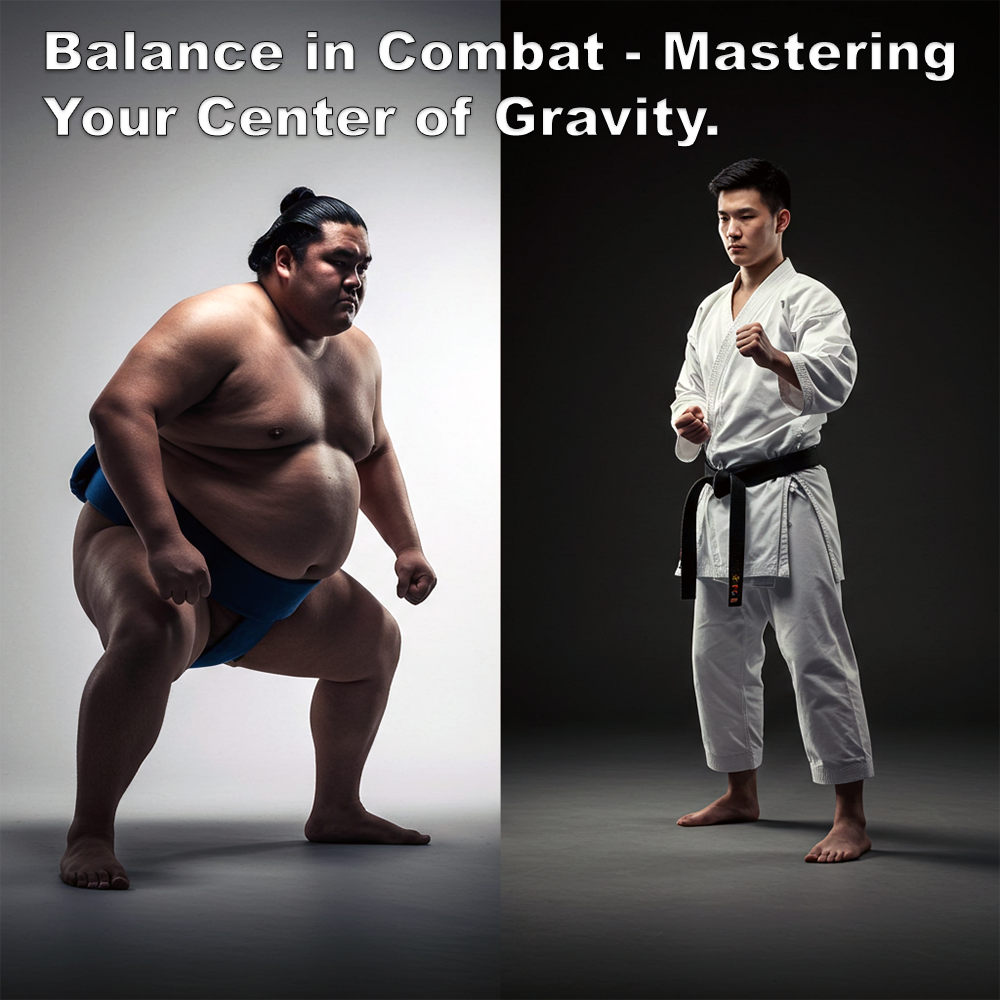
(Approx 2 minute 40 second read)
If you end up having to fight, apart from anything else, having good balance can make or break the outcome.
.
Balance is one of those things you don’t think about – until you lose it. Suddenly, it’s all that matters. In any martial art, controlling your center of gravity (jūshin) is key. It affects how well you move, how stable you are, and how effectively you can generate power.
.
Years ago, I had an argument about whether you can lower your center of gravity. The guy I was debating insisted you couldn’t, though he never quite explained why. I suspect he thought it was fixed because, well, your body parts don’t move around inside you. In a way, he wasn’t wrong. I offered to go to his dojo and demonstrate for him, but he declined.
.
But the martial arts aren’t about static theory; they’re about practical application.
.
You can absolutely control where your center of gravity is by adjusting your stance, bending your knees, and positioning your hips. That’s why a lower stance makes you harder to knock over, while standing too upright makes you an easy target.
.
Your center of gravity isn’t fixed – it shifts as you move. When it stays within your base of support, you’re stable. Let it drift outside that base, and you’ll find yourself off-balance. Think of it like a stack of blocks: if the weight is centered over the base, it stands tall, but if you push it too far, it topples. That’s why fighters lower their stance when bracing for impact or setting up a strike. It’s also why grapplers drop their weight to make that throw.
.
And here’s a little something extra: your body’s got its own internal GPS, called proprioception. This is your body’s ability to sense its position and movement. It’s how you know where your limbs are without looking. It’s like your body’s sense of balance, and it’s something you can train. Drills like standing on one leg, or even just closing your eyes and trying to balance, can help.
.
Bending the knees is the simplest way to lower your center of gravity, but there’s more to it.
.
A good stance gives you a solid base, but too wide and you lose mobility, too narrow and you’re easily toppled. Remember, a stance is not fixed – it should allow you to adapt to the situation.
.
Think of your feet as the base of a triangle. The wider the base, the harder it is to push over. If you narrow it down to standing on one foot, you are way easier to push over, because your base of support has decreased.
.
Hip positioning matters too – if your hips are too high, you’ll feel light and unstable. Drop them, and suddenly you’re rooted.
.
Stand on your tip toes – you’ll notice how easy it is to lose balance and be pushed over.
.
Your core is the control center of all this. A weak core means balance is harder to maintain, while a strong one lets you adjust quickly and stay stable even under pressure. That’s why everyone needs to train their core – it’s not just about strength, but control.
.
Of course, context matters. If you drop too low at the wrong moment, you’ll struggle to move. The trick is finding the right balance between stability and agility. It’s not about staying low all the time, but knowing when to lower your center of gravity and how to use it.
.
Lowering your center of gravity is one of the most important yet overlooked aspects of fighting. You don’t have to overthink it – just understand that it can be managed. Bend your knees, adjust your stance, engage your core, and make sure your weight is where it needs to be.
.
Get that right, at the right time, and you’ll be a lot harder to move – and a lot harder to beat.
.
.
Written by Adam Carter
